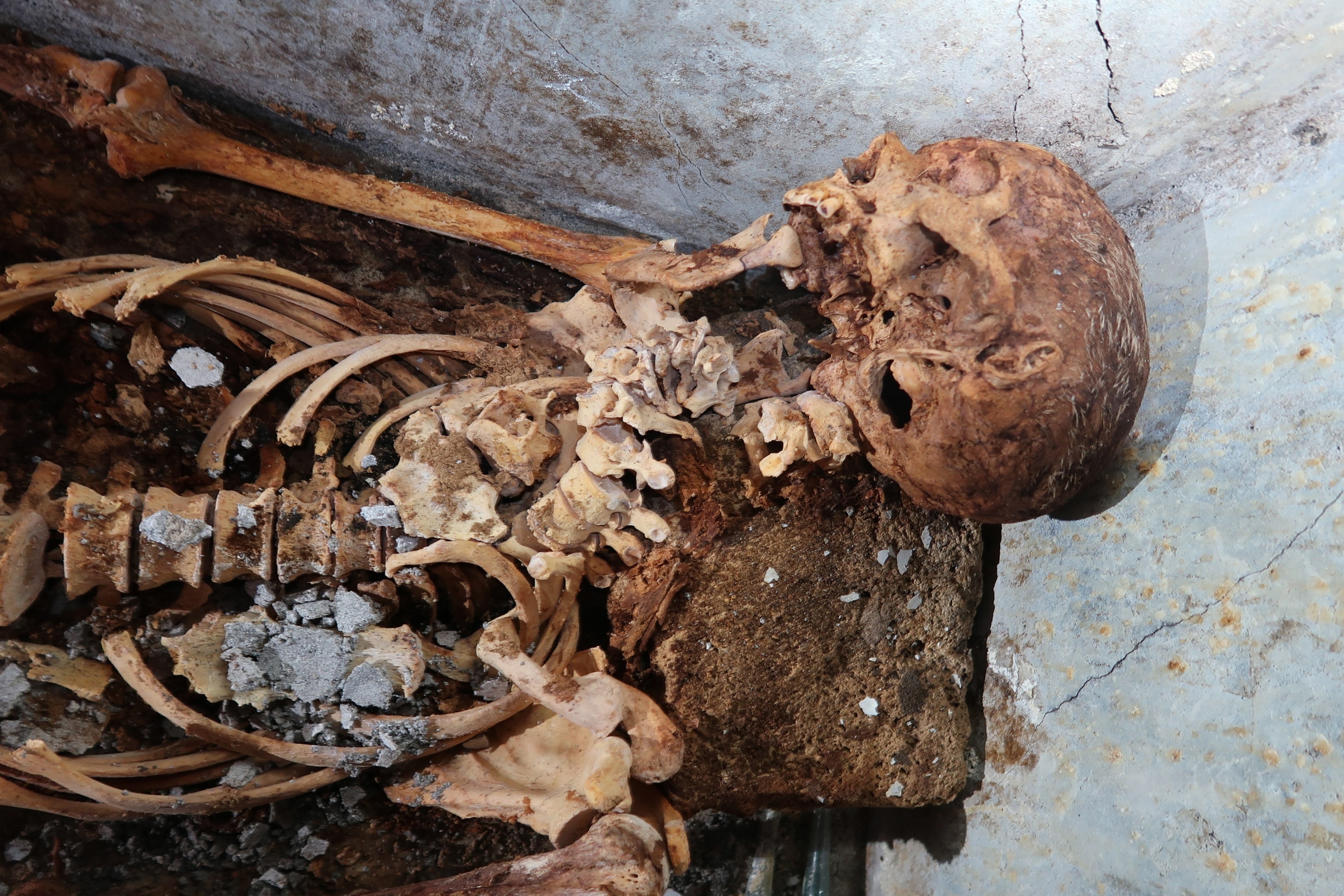Life and death of the Plinies The best chronicle of the Pompeii eruption
According to tradition, the bodies of adults were always cremated in Pompeii, the city destroyed by the eruption of Vesuvius in 79 BC.
However, the finding by researchers at the University of Valencia of
a magnificently preserved tomb
with the partially mummified body of a man has displaced archaeologists: Why did Marcus Venerius Secundio want to be buried?
The excavations have been carried out within the framework of the project that investigates the archeology of death in the Porta Sarno necropolis with the scientific direction in charge of Luana Toniolo, a civil servant archaeologist of the Parco de Pompeya and
Llorenç Alapont, a researcher in the Prehistory department, Archeology and Ancient History of the University of Valencia
.
"It is a very important and unique find. It is the only tomb in Pompeii with a chamber for burial and also with an inscription that
tells not only the life of the deceased but also his love of theater and artistic works, especially in Greek
, for which is the first time that it has been verified that shows were held in this language in the city ", Alapont explains his discovery in an interview with EFE.
Detail of the body found Pompeii Archeological Park PressEFE
An inscription commemorating the late Marcus Venerius Secundio can be read on the marble slab of the pediment of the tomb, but also sheds details that
performances were also held in the theater of Pompeii in Greek
, something that had never been directly witnessed before. .
The tomb, which is supposed to be from the last decades of the life of the city, consists of a masonry on whose façade remains of paint are preserved: green plants are glimpsed on a blue background.
The character of
Marcus Venerius Secundio
appears in the archive of wax tablets belonging to the Pompeian banker Cecilius Jucundus, owner of the
domus
of the same name on the Via Vesuvius and
was a public slave and guardian of the temple of Venus
that once freed had reached a certain social and economic status, as shown by the rather monumental tomb and also, as is deduced, by the inscription.
He became an
Augustan
, that is, a
member of the college of priests
dedicated to the imperial cult, as the epigraph, "
Diede ludi
"
recalls
.
"The
Ludi graeci
must be understood as performances in the Greek language," explains the director of the Pompeii archaeological park, Gabriel Zuchtriegel, who explains that it is the first true testimony of performances in the city in the Hellenic language, since
until now there were only hypotheses.
"It is one of the best preserved skeletons found in the ancient city," he says.
The deceased was buried in a small cell measuring 1.6 x 2.4 meters
behind the main façade, while in the remaining part of the enclosure, two urns were cremated, one of them in a beautiful glass container belonging to a woman named Novia Amabilis, who could be Marcus Venerius's wife.
But the burial of Marcus Venerius "is, therefore,
highly unusual also in terms of the funeral rite
adopted, considering that he was an adult man over 60 years old," they explain, and furthermore, the find is completed with the recovery of objects from the grave goods. including two glass ointments and numerous fragments of what appears to be cloth.
For the UV researcher, "now the great mystery is
why he chose to be buried and not cremated
like the two members of his family" whose remains are in the tomb in two urns.
"We have several hypotheses, the first is that it was a person who had a
Greek affiliation
or a weakness for Greek art and culture because at this time in Greece burial is preferred."
But another part, he explains, "
we are still investigating whether it was a personal choice to keep the body uncorrupted and it
is very important because it would mean that with regard to funerals there was a certain freedom of worship and that strict rules or fear of breaking were not taken into account. the rites and the threats of the Gods. It would suppose that there was an ideological freedom at the moment of choosing after death ".
Regarding the details of the
mummification, he
explains that there is still a lot of work, because now the substances that covered the body and a kind of tissue also found in the tomb will have to be analyzed.
"This fabric, plants or substances that favored mummification
can give us the clue if it was intentional or has simply been mummified because of the sealed environment
that the tomb had: with two walls of malt and vulcanic stone and clay. Or if the sealing was even intentional to better preserve the body, "he adds.
The organic remains of the tissue found and other elements of the body of Marco Venerio Secundio will be studied in the ArchaeChemis unit, UV Chemical Analysis unit, under the supervision of Gianni Gallelo, researcher from the department of Prehistory, Archeology and Ancient History of said center. .
"We have a
lot of work ahead of us
to unravel this great mystery that has appeared in Pompeii and that may change what we knew about funeral traditions in the Roman world," concludes Alapont.
According to the criteria of The Trust Project
Know more
history
culture
Italy
Great families in History (II) The Genovese clan: everything remains in 'famiglia'
Great Families in History The Medici lineage and the power of appearances in Renaissance Italy
Culture 700 years after Dante's death: "He is like us, men lost in the world without understanding it very well"
See links of interest
Last News
Holidays 2021
Home THE WORLD TODAY
Villarreal - Granada CF
Elche - Athletic Club
Stage 4: El Burgo de Osma - Molina de Aragón, live

